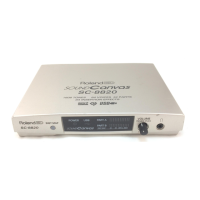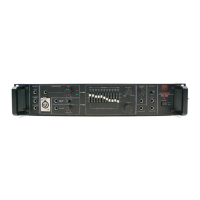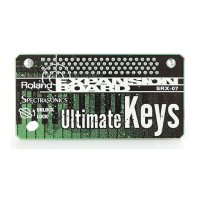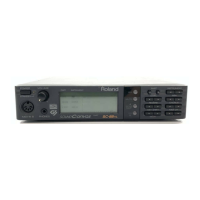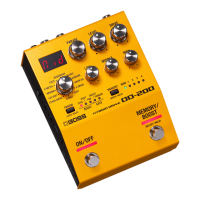Do you have a question about the Roland SC-88 Sound Canvas and is the answer not in the manual?
| Type | Sound Module |
|---|---|
| Sound Engine | LA Synthesis |
| Polyphony | 64 voices |
| Multitimbral Parts | 32 parts |
| Effects | Reverb, Chorus, Delay, EQ |
| MIDI Channels | 16 |
| MIDI | In, Out, Thru |
| User Tones | 64 |
| Outputs | L/Mono, R |
| Headphone Output | 1 x 1/4" |
Information on unit power, electrical safety, and general handling precautions.
Explains the battery backup system and its implications.
Guidance on understanding symbols and conventions used within the manual.
Steps for connecting a MIDI keyboard and initiating sound playback.
Guide to trying out different sounds and using SC-88 buttons.
How to modify volume, pan, and pitch for sounds.
Using built-in effects and tuning the instrument.
Connecting external audio devices and headphones.
Understanding parts, assigning sounds, and selecting variations.
Explanation of how instruments and variations are identified.
Configuration of MIDI channels and input processing.
Information on polyphony and concurrent note handling.
Overview of parameters for performance and detailed sound editing.
Adjusting global and common part settings.
Procedure for creating and editing drum sets.
Introduction to the SC-88's effect capabilities.
How to adjust the equalizer for sound enhancement.
Methods for controlling the intensity of effects.
Detailed settings for core modulation and space effects.
Diagram explaining how effects are applied in different modes.
Creating, editing, and saving custom sounds and drum sets.
Creating display messages and performing bulk data dumps.
Using the Frame Draw function and selecting sound maps.
Operating the SC-88 in dual mode and resetting settings.
Instructions for connecting the SC-88 to a computer.
Procedures for transferring MIDI data with a computer.
Using MIDI messages to choose SC-88 sounds and drum sets.
Basic concepts of MIDI and its application.
Explanation of MIDI channels, multi-timbral operation, and message types.
System Exclusive messages and MIDI routing configurations.
Information on General MIDI and GS format compatibility.
Guidance for resolving operational issues and understanding error messages.
Includes wiring diagrams, parameter lists, and MIDI charts for technical reference.
Comprehensive lists of SC-88 sound maps and drum sets.


